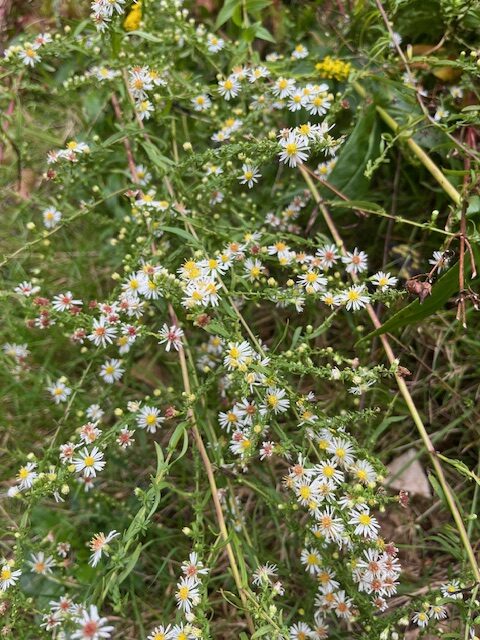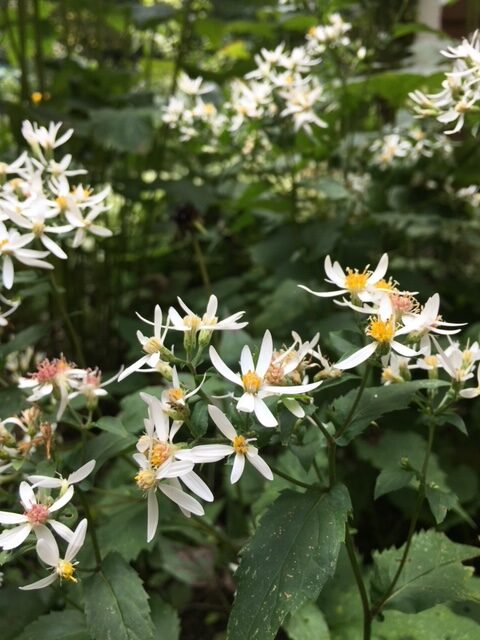
New England Asters at the Silvermine Fowler Pollinator Meadow
Early fall is the time for asters to shine. Their blooming season coordinates with the decreasing sunlight as the days grow shorter. There are over 60 species of native asters in North America. Most varieties, such as the New England, calico, and white heath, prefer full sun. Some, like bigleaf and white wood asters, thrive in shady areas. All kinds of asters are an invaluable food source for insects, birds, and wildlife in gardens and native habitats.

New England asters are pink or purple

Heath asters have tiny white flowers

White wood and bigleaf asters grow in dry shade…

…and readily colonize woodlands!
Asters have composite daisy-like flowers with white, pink, and blue petals and yellow centers. They produce abundant pollen and nectar to feed all kinds of bees, wasps, butterflies, and flower flies. As the flowers are pollinated and age, the yellow centers turn red. The color change alerts foraging insects that the nectar and pollen have already been removed. Hence, the pollinators save energy by avoiding the flowers with red centers and only visiting the ones that are yellow.

A green sweat bee honing in on the one remaining blossom with a yellow center
Asters are host to pearl crescent and painted lady caterpillars, as well as many kinds of moths. They also play an important part in the lifecycle of fireflies. Asters attract snails, which are a favorite food of firefly larvae, which live in the ground for one to two years before transforming into adults. Finally, asters left to go to seed-feed sparrows, goldfinches, and small mammals.
The photos below were taken last week at the Firefly Sanctuary and illustrated the variety of pollinators that rely on fall-blooming asters for pollen and nectar.



Recent Comments